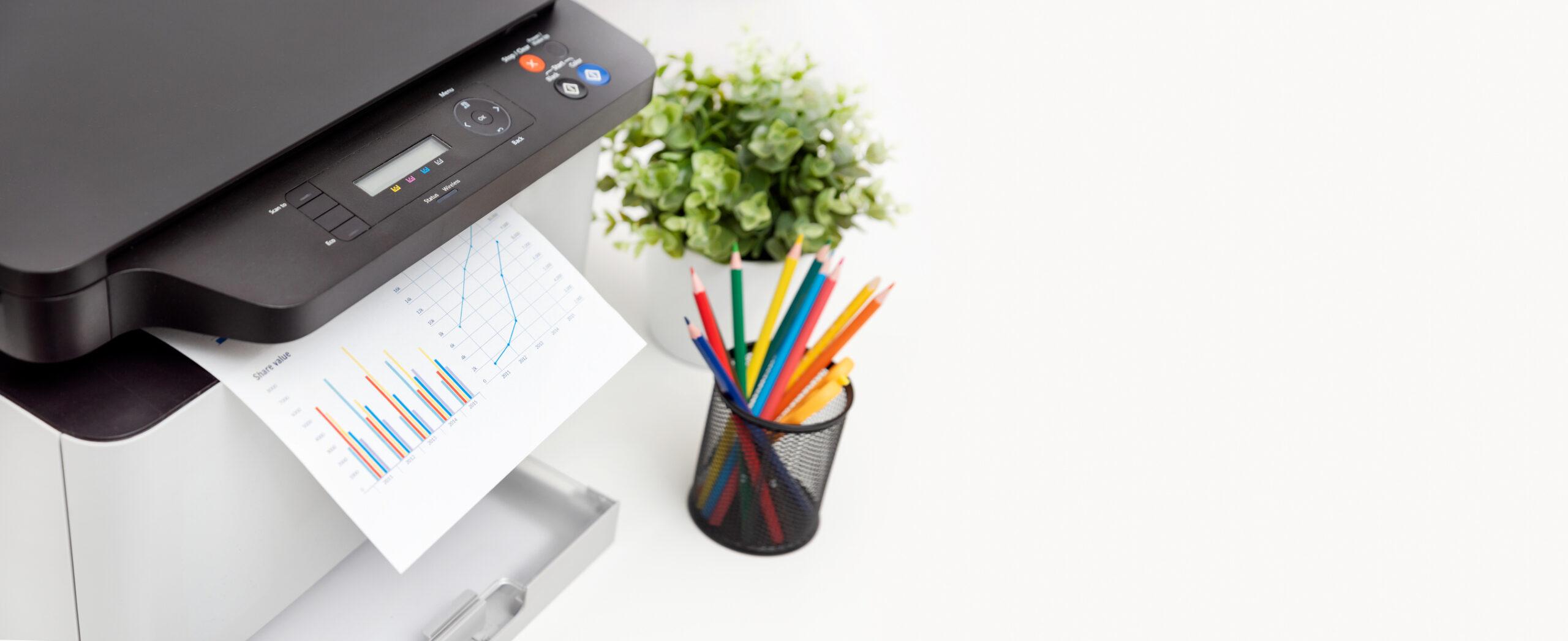Business News Daily provides resources, advice and product reviews to drive business growth. Our mission is to equip business owners with the knowledge and confidence to make informed decisions. As part of that, we recommend products and services for their success.
We collaborate with business-to-business vendors, connecting them with potential buyers. In some cases, we earn commissions when sales are made through our referrals. These financial relationships support our content but do not dictate our recommendations. Our editorial team independently evaluates products based on thousands of hours of research. We are committed to providing trustworthy advice for businesses. Learn more about our full process and see who our partners are here.
Equipment Leasing: A Guide for Business Owners
Leasing equipment can be cheaper in the short term than buying, but there are a few things you should know before you rent your equipment.

Table of Contents
Buying and maintaining equipment is expensive, and new equipment is coming out all of the time. Leasing equipment offers advantages that owning does not, including monthly rental payments and the ability to upgrade to the latest equipment as it comes out.
If your business needs new equipment or technology but you can’t afford to buy it outright, leasing may be an option to consider. However, leasing could be more expensive in the long run, making it a tough decision for many businesses. This guide explains how equipment leasing works and what to consider when deciding whether to buy or lease equipment for your business.
What is equipment leasing?
Equipment leasing is a type of financing in which you rent equipment rather than purchase it outright. You can lease expensive equipment for your business, such as machinery, vehicles and computers. The equipment is leased for a specific period; once the contract is up, you may return the equipment, renew the lease or buy the equipment.
Editor’s note: Looking for information on equipment leasing? Use the questionnaire below, and our vendor partners will contact you to provide you with the information you need:
Equipment leasing is different from equipment financing – taking out a business loan to purchase the equipment and paying it off over a fixed term with the equipment as collateral. In that case, you own the equipment once you pay off the loan.
With an equipment lease, the equipment isn’t yours to keep once the leasing term is over. As with a business loan, you pay interest and fees when leasing equipment, and they’re usually added into the monthly payment. There may be extra fees for insurance, maintenance and repairs.
Equipment leasing can be much more expensive in the long term than purchasing equipment outright, but for cash-strapped small business owners, it’s a means to access necessary equipment quickly.
How does an equipment lease work?
If you decide to lease equipment for your business rather than purchase it upfront, you enter into a lease agreement with the equipment owner or vendor. Similar to how a rental lease agreement works, the equipment owner drafts an agreement, laying out how long you’ll lease the equipment and how much you’ll pay each month.
During the lease term, you use the equipment until the deal expires. There are cases in which you can break the lease – and these instances should be spelled out in the contract – but many leases cannot be canceled. Once the lease is up, you can often purchase the equipment at the current market rate or lower, depending on the vendor.
The rates you pay to lease the equipment vary by leasing company. Your business credit score also plays a role in the rates you’re quoted. The riskier you are in which to lend, the more expensive it will be for you to lease equipment. An equipment lease can be approved online in a few minutes. Leasing companies tend to specialize in specific industries, so it’s important to do your homework to find the right financing option for your business.
Equipment leasing terms are typically for three, seven or 10 years, depending on the type of equipment.
Equipment leasing is not a loan, which means it won’t show up on your credit report or hurt your ability to borrow. In many cases, the IRS lets you deduct your equipment lease payments if you’re using the equipment for your company.
Benefits of equipment leasing
Leasing equipment offers many benefits to cash-strapped small businesses. While not all equipment leases are the same, and there are many ways to finance a lease, here are some advantages to leasing your equipment:
- It’s cost-effective to get started. Many lessors don’t require a significant down payment.
- You can update your equipment. If you often need to update equipment, leasing is a good option because you aren’t stuck with obsolete machinery.
- It’s easier to scale. If you need to upgrade to more advanced equipment to handle a higher work volume, you can do so without selling your existing machinery and shopping for replacements.
- It may offer tax credits. Equipment leases are often eligible for tax credits. Depending on the lease, you may be able to deduct your payments as a business expense by taking advantage of Section 179 qualified financing deductions.
How to get started with equipment leasing
Before you start the equipment leasing process, answer the following questions. It may seem like a lot of effort upfront, but without answering these questions as they relate to your business, you can’t make an informed decision on leasing or buying equipment.
What is your monthly budget?
Leasing offers substantially lower monthly payments than purchasing, but you still need to factor the costs into your monthly cash flow. Start with what you can afford and work from there; don’t work the other way around by getting price quotes and trying to squeeze them into your budget.
How long will you use the equipment?
For short-term equipment use, leasing is almost always the most cost-effective route. If you’ll use the equipment for three years or more, a loan or standard line of credit may be more beneficial. Factor in your business’s growth too: If your company is rapidly growing and evolving, a lease may be a better option than buying.
How quickly will the equipment become obsolete?
Technology becomes outdated more quickly in some industries than others. Consider obsolescence before deciding whether buying or leasing makes sense for you.
Can the equipment be leased?
Equipment that qualifies for a lease is practically limitless. But there are a couple of conditions.
- Purchase price: Equipment leases enable your business to obtain equipment and machinery with a high dollar value. This includes costly single items – like heart monitors and extraction machinery – and smaller items needed in bulk, like kiosks, software licenses and telephones. For this reason, it’s uncommon to find a lease agreement for purchases under $3,000, and many large lenders require a minimum purchase of $25,000 to $50,000.
- Hard assets: The equipment you lease must be considered a hard asset – anything that could be listed as personal property and not permanently attached to real estate. Soft assets, such as employee training programs and warranties, do not qualify for lease programs.
Leasing vs. purchasing
While many companies benefit from equipment leasing, an outright purchase is more cost-effective in some instances. When comparing purchasing and leasing options, consider these factors:
- Purchase price
- Amount to be financed
- Annual depreciation
- Tax rates and inflation
- Monthly lease costs
- Equipment usage
- Ownership and maintenance costs
Pros and cons of equipment leasing
A lease is ideal for equipment that routinely needs upgrading – for instance, computers and other electronic devices. Leasing gives you the freedom to obtain the latest machinery with a low upfront cost, plus with a fixed rate, you’ll have monthly payments you can budget.
At the same time, leasing provides a wider range of equipment options for businesses. Leasing makes it financially possible for you to afford equipment that would otherwise be too costly to purchase.
There are some drawbacks, though. Leasing requires that you pay interest, which adds to the overall cost of the machine over time. Sometimes, leasing can be more expensive than purchasing the equipment outright – especially if you purchase the equipment when the lease term has expired.
Additionally, some lenders enforce a certain term length and mandatory service packages. This can add to the overall cost if the lease term extends beyond how long you need the equipment. In this scenario, you could get stuck with a monthly payment and storage costs associated with unused equipment.
Pros and cons of buying equipment
When you own a piece of equipment, you can modify it to suit your exact needs. This isn’t always the case with a lease. Similarly, buyers aren’t bound by the limitations an equipment lessor imposes.
Purchases also enable you to resolve any issues more promptly because you don’t have to obtain approval from the leasing company to schedule a repair or order a replacement part. In addition to the depreciation tax benefits available through Section 179, you can recoup some money by reselling the equipment when you no longer need it.
Like leasing, purchasing has its drawbacks. The biggest is obsolescence; with a purchase, you’re stuck with outdated machinery until you buy new equipment. Also, market competitiveness and the availability of tax incentives with leasing are often enough to dissuade many business owners from purchasing equipment outright. The costs to maintain and repair machinery, plus a steep purchase price, may put too much of a financial strain on your company.
By some estimates, businesses budget 1 to 3 percent of sales for maintenance costs. This is a rough estimate, though. The equipment, service hours, ages, quality and warranty determine the actual maintenance costs.
Equipment leasing vs. other financing options
A purchase isn’t the only alternative to leasing. In fact, it’s not even the most common. Some of the best business loans can cater to your small business’s equipment needs. Lines of credit and factoring services are also popular ways to finance equipment acquisitions.
Business loans
Like a purchase, business loans provide more ownership of the equipment. With a lease, the lessor holds the title to any equipment and offers you the option to buy it when the lease concludes. A loan enables you to retain the title to any of the items you purchase, securing the purchase against existing assets.
Unfortunately, terms can be a loan’s major drawback. Unlike a lease, which provides fixed-rate financing, a loan or line of credit’s interest rate may fluctuate throughout the loan term. This can make budgeting problematic, depending on the size of the loan. Furthermore, banks and other lenders often require a much larger down payment – 20 percent of the total cost of equipment by some estimates.
Invoice factoring
Factoring is another way to purchase costly equipment and is often faster than applying for a loan. By leveraging your accounts receivable, you can quickly turn outstanding payments into cash by selling these invoices to a factor. Factoring is an ideal alternative to leasing and loans for startups and small businesses, often paying up to 90 percent of the total value of your accounts receivable – depending on the creditworthiness of your customers.
Funding is usually available in a matter of days. This makes factoring a popular resource for smaller manufacturing operations, the transportation industry and businesses that routinely handle contracts with a fast turnaround.
The leasing process: What to expect
When applying for a lease, you can expect the process to include these steps:
- You complete an equipment lease application. Be sure you have financial data available for your company and its principals, as this may be required upfront or after initially completing the application.
- The lessor processes your application and notifies you of the result. This usually happens within 24 to 48 hours of submitting the application. Some lessors may not require financials or a business plan for applications on dollar amounts ranging from $10,000 to $100,000. For financing over $100,000, expect to provide complete financials and a business plan.
- Once you receive approval, you must review and finalize the lease structure – including monthly payments and the fixed APR. You’ll then sign the documents and resubmit them to the lessor, typically along with the first payment.
- When the lessor has received and accepted the signed documents and first payment, you are notified that the lease is in effect and that you are free to accept delivery of the equipment and commence any necessary training.
Equipment lease types: Operating and finance
There are two primary types of equipment leases: operating leases and financial leases. Here’s a breakdown of both.
What is an operating lease?
An operating lease allows a company to use an asset for a specific period of time without ownership. The lease period is usually shorter than the economic life of the equipment. At the end of the lease, the lessor can recoup additional costs through resale.
Unlike an outright purchase or equipment secured through a standard loan, equipment under an operating lease cannot be listed as capital. It’s accounted for as a rental expense. This provides two specific financial advantages:
- Equipment is not recorded as an asset or liability.
- Equipment still qualifies for tax incentives.
Dealers’ rates may vary widely, but in general, the average APR for an operating lease is 5 percent or lower. Average contracts last 12 to 36 months.
With the prevalence of leasing, accounting regulations set in 2016 by the Financial Accounting Standards Board require companies to reveal their lease obligations to avoid the false impression of financial strength.
In fact, all but the shortest-term equipment leases must now be included on balance sheets. While leased equipment does not have to be reported as an asset under an operating lease, it’s far from free of accountability.
What is a finance lease?
Sometimes known as a capital lease, a finance lease structure is similar to an operating lease in that the lessor owns the equipment purchased. It differs in that the lease itself is reported as an asset, increasing your company’s holdings and its liability.
Commonly used by large companies – such as major retailers and airlines – this setup provides a unique advantage, as it allows the business to claim both the depreciation tax credit on the equipment and the interest expense associated with the lease itself. In addition, the company may choose to purchase the equipment at the end of a finance lease.
Given the financial edge this provides, the APR for a finance lease is higher. Standard interest rates are currently between 6 and 9 percent, while contracts range from 24 to 72 months.
Lessee responsibilities
Additional responsibilities can result in expenses above and beyond your monthly lease payment. These typically include the following items:
- Liability insurance: Average estimates for liability insurance range from $200 to $2,200 annually, with many businesses reporting costs of $1,000 or less.
- Extraneous costs: Depending on your lease structure, you may be held liable for some maintenance and repairs. Extraneous costs can include any legal fees, fines and certification expenses.
- Shipping charges: This includes transportation and shipping costs to return the equipment.
- Added fees: Read your contract carefully. Fees can be added for a one-time documentation fee (which is sometimes as much as $250) or late payments (which run from $25 to 15 percent of the amount overdue).
Comparing equipment finance providers
Given the costs and considerations we’ve addressed, comparing several lease providers is essential to ensure you get the best rate. Before beginning your search, you familiarize yourself with these three types of equipment finance providers and the benefits each provides:
Lease broker
A lease broker serves as an intermediary between you and any prospective lessors. The broker will present you with the offers and submit your requests for financing, handling much of the paperwork for you.
Brokers represent only a small segment of the leasing market, and their services do not come cheap. Brokers reportedly charge 2 to 4 percent of the equipment cost to negotiate a deal.
The benefit of using a broker is realized in their extensive relationships. Often industry-specific, they specialize in obtaining a wider range of equipment, sometimes at better prices than would be available through standard channels.
Leasing company
A leasing company is often the subsidiary leasing arm of a manufacturer or dealer. Also known as a captive lessor, a leasing company’s sole aim is to facilitate leases with its parent company or dealer network. For this reason, you will usually deal with a leasing company only when working directly with a manufacturer.
Independent lessor
An independent lessor encompasses all third-party lease providers. Independent lessors include banks, lease specialists and diversified financial companies that provide equipment leases directly to your business. They differ from leasing companies in that they typically specialize in equipment remarketing, a skill that enables them to group products from multiple manufacturers and offer more competitive APRs.
Tips on choosing a lessor
The best advice for choosing a quality lessor is to examine the company with the same level of scrutiny with which you and your company are being scrutinized. Give preference to those willing to partner with your firm. This may be represented in the level of background and experience they have in relation to your line of business or their willingness to work with you on certain terms.
Some fees specified under the lessee’s responsibilities – particularly application fees and late fees (at least on the first late payment) – may be covered or waived altogether depending on the lessor.
Also, take time to research some key items about the lessor.
- Business information: Look into the lessor’s payment history, credit history, business summary, corporate relationships, financial statements and any public filings.
- Pending litigation: Search public records for any notices of pending litigation.
- Payment system: Is it simple, or does it require mountains of paperwork?
Questions to ask a dealer
Before choosing a dealer, get price quotes from at least three companies, and ask all the dealers on your list these questions. Asking the right questions is half the battle for getting a fair deal for your company’s services and goods.
- How much money is required upfront? Lease financing often provides 100 percent of the dues required for an equipment purchase. Loans do not, often requiring up to 20 percent of the total as a down payment. If a down payment is required, consider reassigning capital to cover any upfront costs.
- Who takes advantage of the tax incentives? Under a loan structure, your company can claim depreciation. However, you will have to provide a down payment, and the interest rate is higher. Under a lease, the lessor claims depreciation. In exchange, it offers a lower APR – often half that of a loan. If the depreciation credit is important to you and you still want to lease, ask about the availability of finance or capital leases.
- Are the financing terms flexible? Leasing is often viewed as the most flexible financing option, especially compared to loans. Depending on the lease structure, you can start with low payments and increase them as time goes by (known as a “step-up lease”), defer payment to give yourself an extra window before the first payment is due, and even add more equipment onto an existing lease under a “master lease” structure.
Lease-to-own agreements
If you’re interested in keeping the equipment you lease for your business but don’t have the cash to purchase it or the credit to qualify for a traditional loan, consider a lease-to-own option. Lease-to-own agreements require businesses to make scheduled payments for a specified time frame before gaining ownership of the equipment.
A lease-to-own agreement has four primary components:
- The lessee enters an equipment leasing agreement with the option to purchase at the end of the contract.
- The lessor applies a percentage of each payment to the equipment’s purchase price.
- At the end of the contract, the lessor pays the remaining balance to gain ownership of the equipment.
- If the lessee decides not to purchase the equipment, payments made and equipment are forfeited to the lessor.
It’s important to note that if you enter a lease-to-own agreement, your business will likely pay a price above fair market value for the equipment. On the other hand, once payments are made, your business has complete ownership of the equipment.
Typically, lease-to-own contracts last the same amount of time as other equipment leasing agreements. The main difference with an equipment leasing option is that a percentage of your payments is applied to the equipment’s purchase price. If a business can’t purchase the equipment at the end of the contract, the lessee may, in most instances, request an extension, ask for a renewal or opt to return the equipment.
While a lease-to-own situation may be convenient for many small business owners, it’s not without risks. If your company isn’t capable of purchasing the equipment at the end of the agreement, you forfeit the equipment and all payments, which can be a major financial loss for a small business. The most important factor in this type of agreement is to consistently communicate with your lessor and ask to renegotiate time frames if necessary.
Lease-to-own agreements are best for heavy machinery, production equipment or any other type of equipment your business would typically need a traditional loan to purchase.
To lease or buy equipment is a key consideration
Depending on your budget and circumstances, leasing your equipment may offer your business important advantages. However, there are drawbacks, such as higher costs over time, interest payments and lack of control over the equipment. It can help you reduce maintenance costs and stay up to date with the latest equipment, though, since you won’t be sinking a lot of money into a piece of equipment you can’t easily replace. Consider all of these factors before leasing or buying new equipment to set your business up for success.
Tejas Vemparala and Dachondra Cason contributed to this article.






